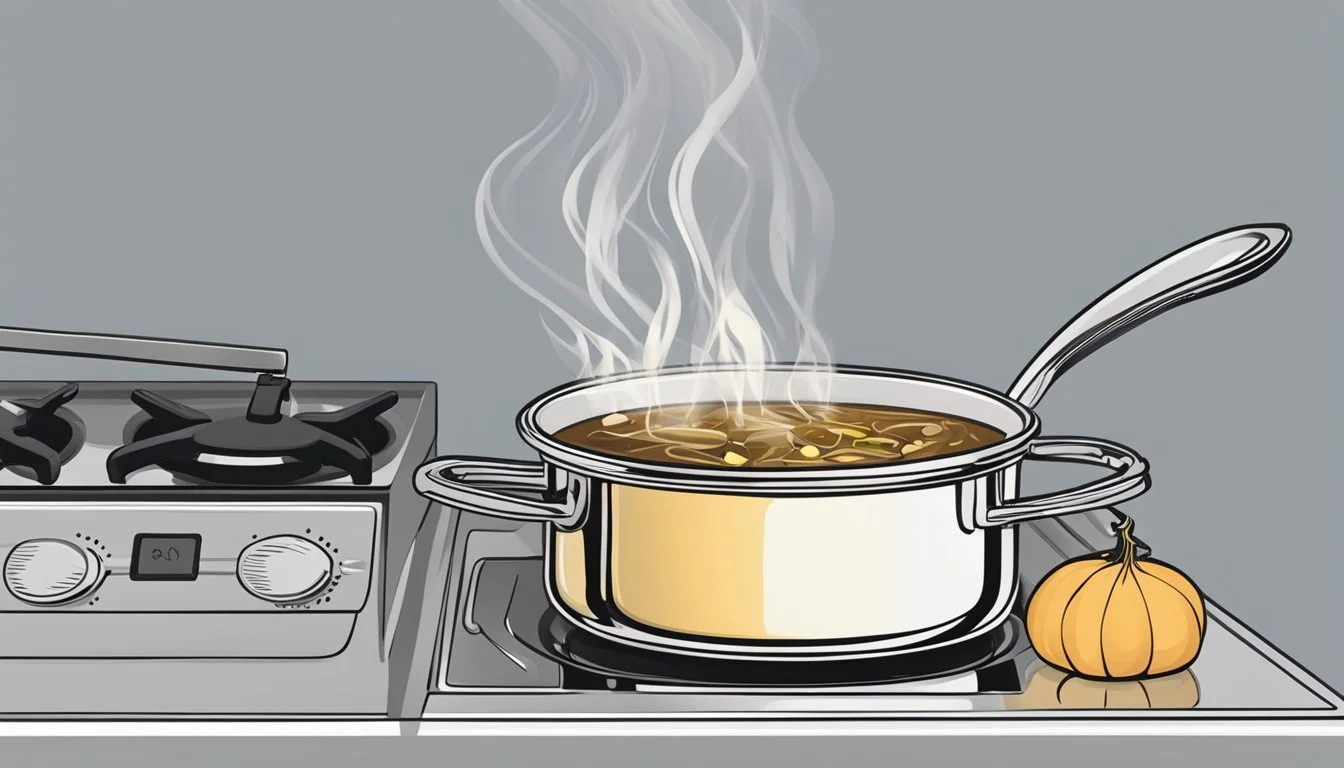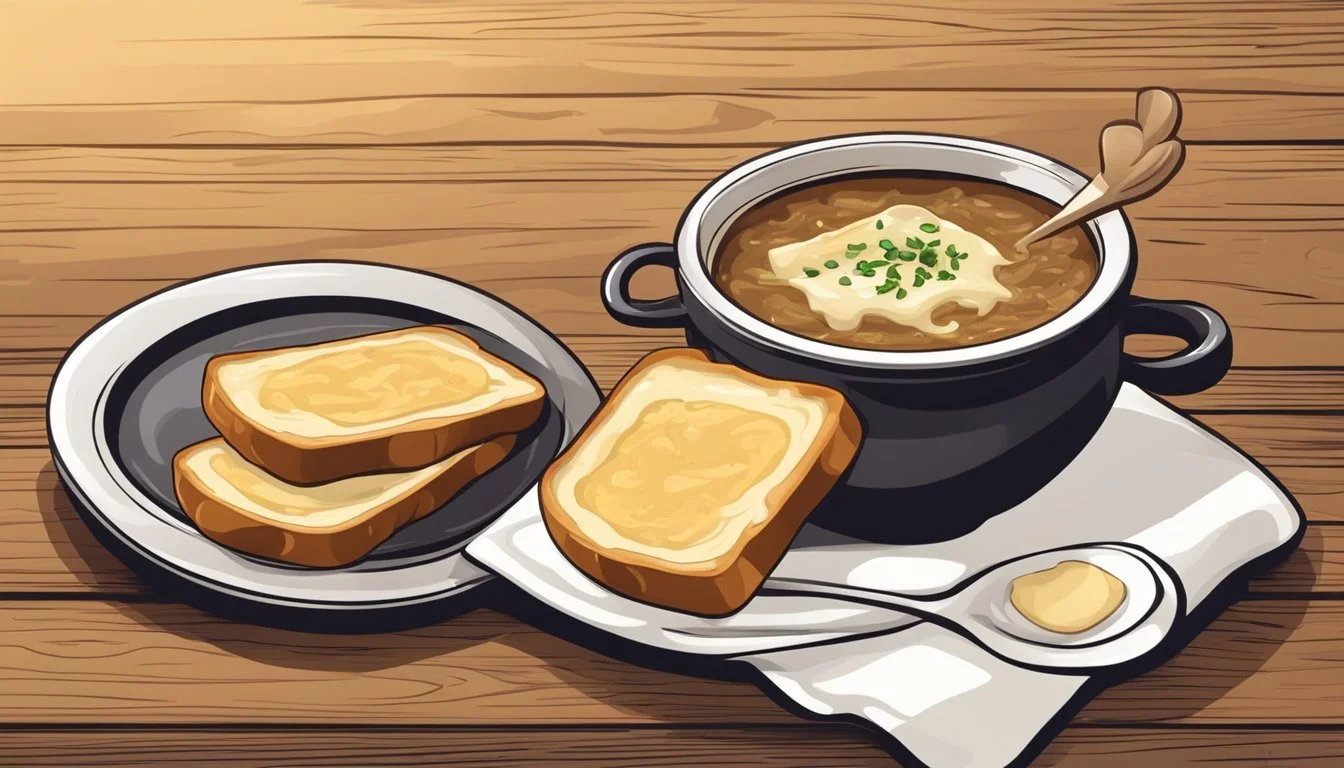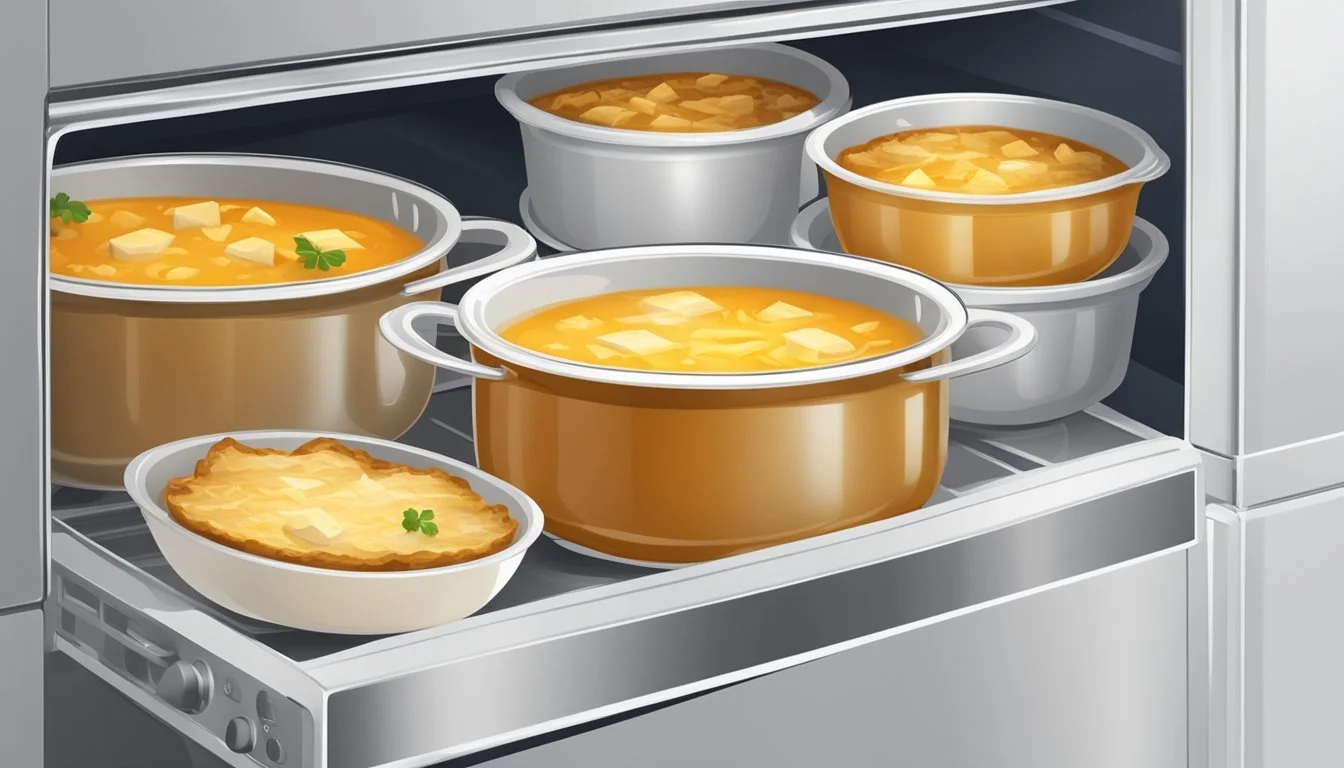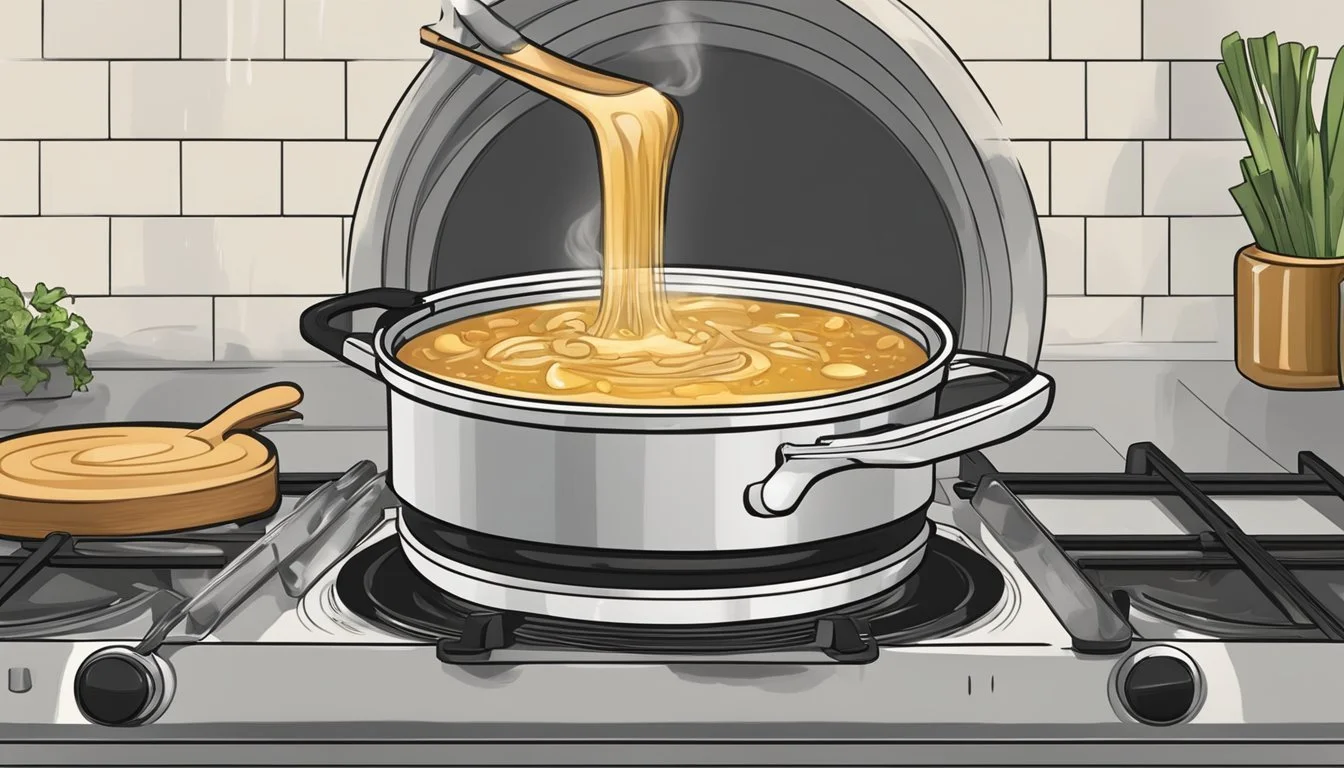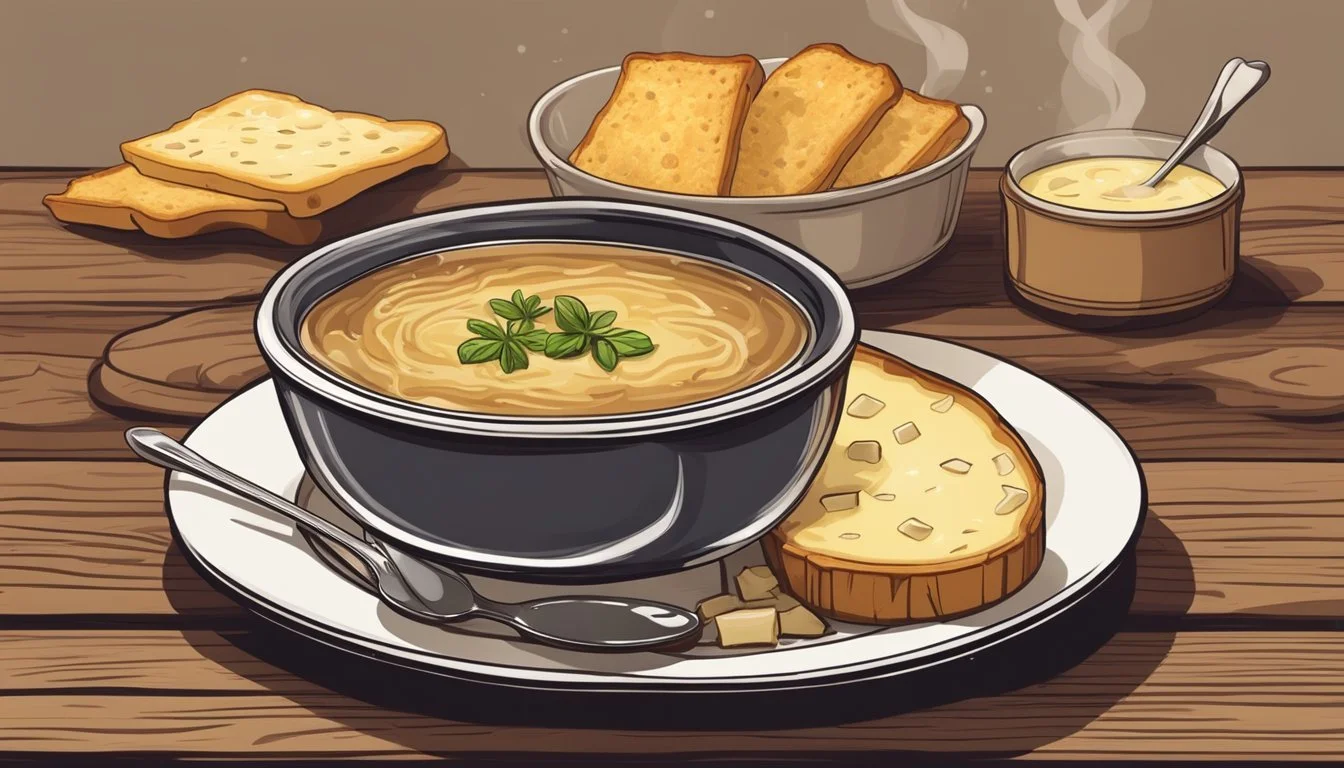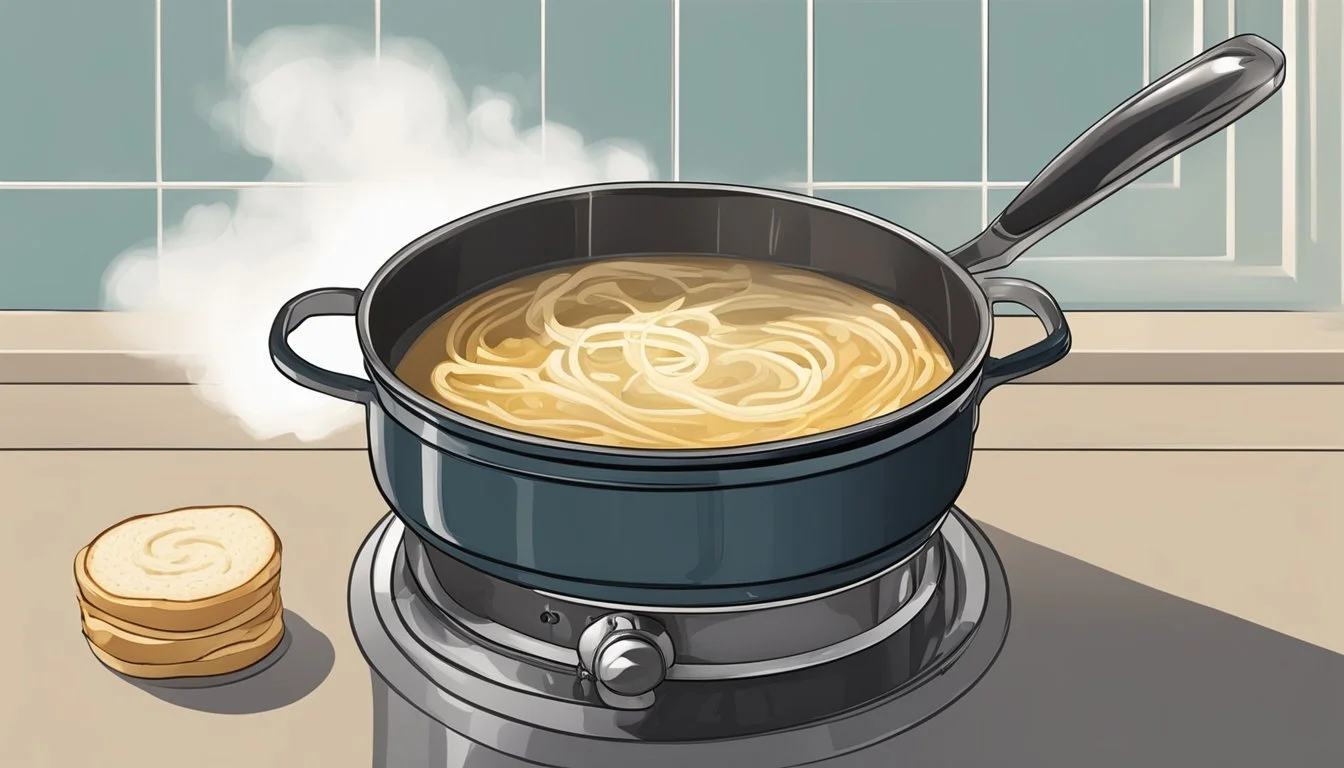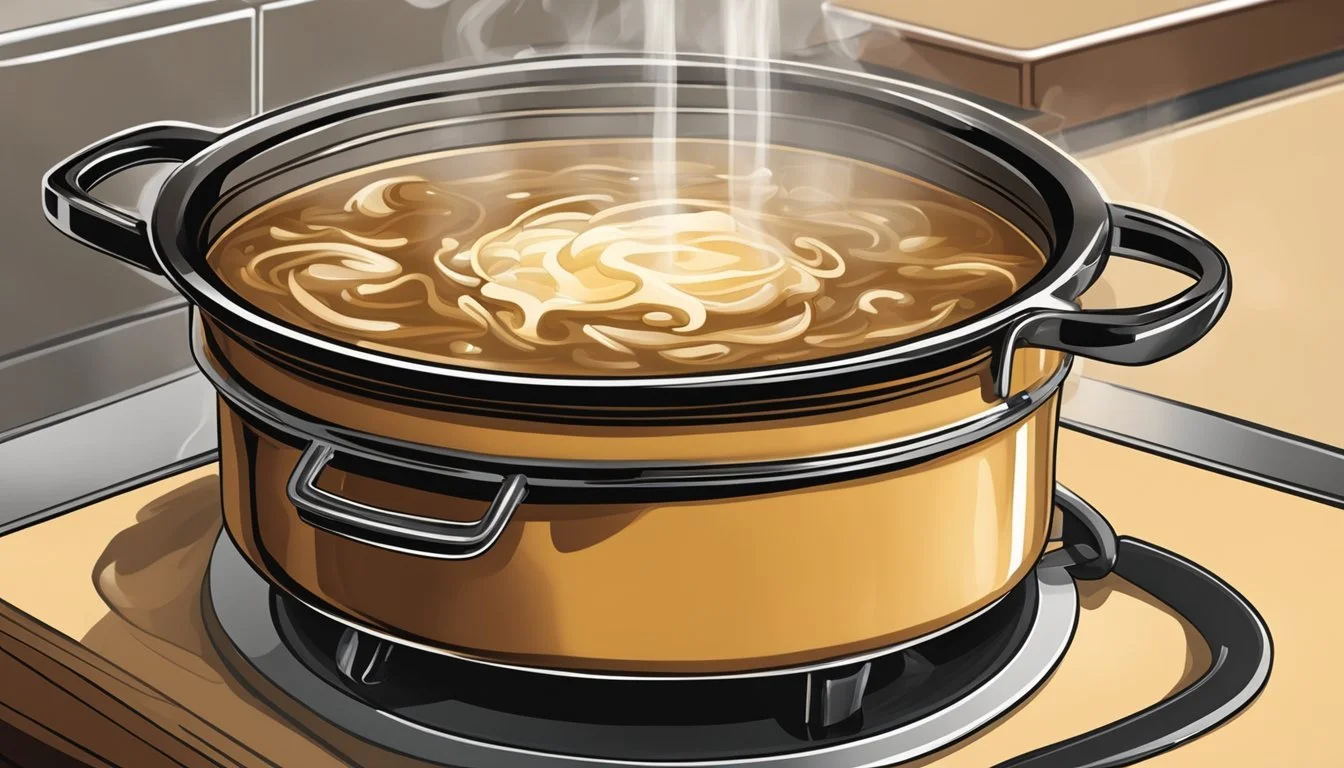How to Reheat French Onion Soup for Perfect Flavor and Texture
Reheating French onion soup to maintain its rich, comforting flavors and textures requires precise techniques. This classic dish, known for its savory broth, caramelized onions, and melted cheese, can lose its appeal if not reheated properly. To reheat French onion soup effectively, use an oven-safe dish, cover it tightly, and warm it gradually at a low temperature.
When it comes to comfort food, nothing matches the satisfaction of a well-prepared French onion soup. The challenge lies in reheating leftovers while preserving the integrity of the soup. Preheating the oven to 350ºF (180ºC) and ensuring proper coverage with foil or a lid can help retain moisture and prevent excessive evaporation.
Adding a fresh slice of bread topped with grated cheese during the final reheating stage can recreate the original experience. For the best results, broil the soup until the cheese is melted and bubbly. This method revitalizes the leftovers, bringing back their full, delicious potential.
Understanding French Onion Soup
French Onion Soup is a savory dish known for its deep, rich flavors and textures. It's crafted with specific ingredients that contribute to its unique taste and consistency, and topped with carefully selected cheeses.
Ingredients and Flavor Profile
The main ingredients are caramelized onions, beef broth, and a variety of herbs. Caramelized onions provide a depth of sweetness and richness. Beef broth is the traditional base, contributing a robust, savory flavor. Sometimes, chicken broth is added for balance.
Herbs like thyme and bay leaves enhance the aromas. Salt and pepper are used for seasoning. Together, these elements create a flavorful, aromatic soup.
Ideal Textures and Consistency
French Onion Soup should have a balance of textures. The broth must be rich and not overly thin, holding the concentrated flavors of the caramelized onions.
Caramelized onions add a tender, slightly chewy texture. The toast or crouton should remain somewhat crunchy, providing contrast to the soup.
The cheese topping should melt smoothly and form a golden, bubbly layer. This makes the first bite especially gratifying.
Cheese Choices for Topping
Gruyere is the classic choice for its nutty flavor and excellent melting properties. It melts evenly and forms a beautifully browned crust.
Provolone is another option due to its mild flavor and stretchy texture when melted. Occasionally, a blend of cheeses like Mozzarella and Parmesan is used for added depth and variety.
Selecting the right cheese enhances the overall experience of the soup. It should complement the rich, savory flavor of the broth and onions while adding its own distinct taste.
Storing Leftovers Properly
Properly storing French onion soup helps maintain its flavor and quality. Understanding how to cool, refrigerate, and freeze the soup will preserve its freshness and prevent spoilage.
Cooling and Refrigerating
After preparing French onion soup, allow it to cool slightly before refrigerating. Rapid cooling is crucial to prevent condensation and bacterial growth. Pour the soup into shallow containers for quicker cooling.
Once cooled to room temperature, cover the containers with lids or plastic wrap. Place them in the refrigerator promptly. French onion soup stored in airtight containers can remain fresh in the refrigerator for up to 4 days.
It's advisable to label the containers with the date to track freshness. Avoid placing hot soup directly into the refrigerator as it can raise the appliance's internal temperature, reducing efficiency and potentially spoiling other items.
Freezing for Long-Term Storage
For longer storage beyond a few days, freezing is the best option. Pour the cooled soup into freezer-safe containers or bags, leaving some space to allow for expansion.
Remove air from freezer bags to prevent freezer burn. Tightly seal the containers before placing them in the freezer. Properly stored, French onion soup can last up to 3 months without losing significant quality.
Label containers with the freezing date and contents. Reheating frozen soup can be done directly from the freezer or after thawing it overnight in the refrigerator. Thawing in the refrigerator is preferred to ensure uniform heating and maintain texture.
Airtight Containers and Packaging
Using airtight containers or bags is essential to preserve the soup's freshness and prevent condensation. These containers prevent air and moisture from entering, crucial for both refrigerating and freezing.
For refrigerating, glass or plastic containers with tight-fitting lids work well. For freezing, consider containers specifically labeled as freezer-safe, or use double-layered freezer bags for added protection.
Before sealing, ensure the soup has cooled to prevent condensation inside the container. Always check that lids or bag seals are secure to avoid leaks and preserve the soup's flavor and quality. Proper packaging helps maintain the delicious taste of French onion soup for future enjoyment.
Pre-Reheating Preparations
Proper pre-reheating steps ensure that your French onion soup retains its rich flavors and textures when warmed up. The focus is on thawing, oven and stovetop preparation, and portioning the soup for even reheating.
Thawing and Bringing to Room Temperature
If the soup has been frozen, it's important to thaw it properly. This can be done by transferring the soup from the freezer to the refrigerator at least 24 hours before you plan to reheat it.
For faster thawing, place the soup in a sealed plastic bag and submerge it in cold water. Change the water every 30 minutes until the soup is thawed.
Once thawed, let the soup reach room temperature. This prevents uneven heating and helps maintain the integrity of the ingredients.
Oven and Stovetop Readiness
Preheat the oven to the necessary temperature, generally 350ºF (180ºC), to ensure the soup heats evenly. Ensure that you have oven-safe bowls or dishes ready, such as ramekins or a larger oven-safe dish for multiple servings.
If using a stovetop, ensure all needed utensils and pots are clean and ready. Preheating the stovetop to medium heat can help in quick and efficient warming. Having everything ready beforehand minimizes delays and maintains consistent soup quality.
Portioning for Single Servings
Divide the soup into individual portions to ensure even reheating. Using oven-safe ramekins is ideal, as they allow for personalized servings and can be directly placed into the oven.
If reheating on the stovetop, consider portioning the soup into small pots or saucepans. This will help in maintaining the consistency of each serving.
Preparing single servings also allows for better control over the final presentation, especially when adding toppings like toast and melted cheese after reheating.
Reheating Techniques
Reheating French onion soup to preserve its rich flavors and textures can be achieved with various methods. Choosing the best method depends on the desired balance between convenience and maintaining the soup's quality.
Oven Reheating for Optimal Texture
Using the oven for reheating French onion soup ensures the best texture. Preheat the oven to 350°F (180°C).
Pour the soup into an oven-safe dish. Cover the dish with aluminum foil to retain moisture. Heat for 10-20 minutes or until the soup is hot throughout.
For an authentic finish, ladle the soup into bowls and top with toasted bread and grated cheese. Broil for a few minutes until the cheese is melted and bubbly.
Benefits of this method:
Retains flavors and textures
Cheese melts to a perfect consistency
Even and controlled heating
Tips:
Avoid reheating at too high a temperature to prevent drying out the soup.
Ensure the dish is appropriately covered to retain moisture.
Stovetop Method for Control and Speed
The stovetop method offers the most control and fastest reheating time. Pour the soup into a saucepan and place it over medium-low heat. Stir occasionally to ensure even heating and to prevent the soup from sticking to the pan.
Adjust the heat as needed, ensuring the soup doesn't reach a rapid boil. It should take about 10-15 minutes to heat thoroughly, depending on the quantity.
Benefits of this method:
Quick and efficient
Allows for continuous monitoring and stirring
Tips:
Stir frequently to avoid burning.
Adjust the heat as necessary to maintain a gentle simmer.
Microwave as a Last Resort
Using a microwave is the fastest but least recommended method due to potential texture loss. If using a microwave, pour the soup into a microwave-safe bowl. Cover it with a microwave-safe lid or plastic wrap, leaving a small vent.
Heat on high power in 1-minute intervals, stirring between each interval. Continue until the soup is heated through, which should take about 3-4 minutes.
Benefits of this method:
Quickest option
Convenient for small servings
Tips:
Stir between intervals to ensure even heating.
Be mindful not to overheat, as it can alter the soup's texture.
These methods provide various options for reheating French onion soup, each with its own benefits and considerations.
Serving and Presentation Tips
For a comforting and delectable French onion soup, how you serve and present it makes all the difference. Properly adding the bread and cheese topping, achieving the perfect melt, and finishing with garnishes elevate the experience.
Adding the Bread and Cheese Topping
To achieve a restaurant-quality presentation, begin by preparing slices of toasted bread or croutons. These should be sturdy enough to withstand the broth without becoming soggy quickly. Arrange the toasted bread on top of the hot soup after it's reheated.
Choose a high-quality cheese like Gruyère or Swiss. Grate it evenly and generously over the bread. This not only adds a rich, melted cheese topping but also enhances the soup's texture and flavor, offering the perfect balance of creamy and crunchy.
Broiling for Perfect Cheese Melt
Once the bread and cheese are in place, the next critical step is broiling. Preheat the broiler and place the bowls of soup on a baking sheet. Cover the bowls loosely with aluminum foil to prevent the soup from drying out. Watch closely as the cheese melts and bubbles, ensuring it reaches a golden-brown perfection.
This step should only take a few minutes. The goal is to achieve a perfectly melted, slightly crispy cheese topping without burning it. This technique enhances the comforting texture of melted cheese combined with the toast underneath.
Garnishes and Final Touches
Adding garnishes can significantly elevate the visual appeal and flavor profile of your French onion soup. Fresh herbs like finely chopped parsley or thyme are excellent choices. They add a pop of color and a layer of aromatic flavor.
Consider a sprinkle of freshly ground black pepper or a dash of paprika for a slight kick. Additionally, a drizzle of extra virgin olive oil can enhance the soup's richness. These final touches ensure that your soup not only tastes delightful but also looks inviting and well-presented.
Best Practices for Reheating
Proper reheating maintains the texture of bread toppings, preserves the depth of the savory broth, and ensures flavors remain rich.
Monitoring the Reheating Process
When reheating French onion soup, keeping an eye on the temperature and texture is crucial. Use a thermometer to ensure it reaches about 165°F (74°C) for safe consumption. Heating slowly prevents the soup from boiling, which can alter flavors adversely.
Stirring occasionally helps distribute heat evenly, preventing hot spots. For gentle reheating, a low setting on the stovetop using a saucepan works best. Alternatively, reheating in the oven at 325°F (163°C) for about 20-30 minutes ensures even warmth. Cover the dish with aluminum foil to retain moisture, avoiding excessive evaporation.
Preventing Sogginess in Bread Toppings
Sogginess in bread toppings can be avoided by preparing fresh croutons or toast just before serving. When reheating soup directly from leftovers, preheat in an oven-safe dish. Use a baking sheet to toast new slices of French bread until golden and crisp.
To assemble, place freshly toasted bread atop the hot soup. Grate Gruyere cheese over the bread and broil in the oven until the cheese is melted and bubbly. This two-step method keeps the bread crunchy and the cheese perfectly melted, retaining the desired texture without becoming mushy.
Maintaining the Integrity of Flavors
The rich, savory broth of French onion soup requires careful handling during reheating to preserve its depth. Avoid boiling, as this can break down delicate flavors. Instead, reheat gently over low heat or in a moderate oven setting.
For stovetop reheating, bring the soup to a gentle simmer. This allows aromas and flavors to redevelop without burning. Adding a small amount of fresh herbs or a splash of wine can rejuvenate the taste.
If reheating multiple servings, ensure the soup is reheated uniformly by distributing it evenly across a baking sheet or similar wide container. Stirring occasionally while heating helps in maintaining a consistent flavor profile throughout.
Adaptations and Substitutions
When reheating French onion soup, there are opportunities to tailor the dish to personal tastes and ingredient availability through various adaptations and substitutions.
Alternative Cheese Choices
Traditional French onion soup often uses Gruyère cheese due to its excellent melting properties and nutty flavor.
If Gruyère is unavailable, Swiss cheese is a suitable substitute that offers similar meltability and flavor profile.
For those looking for a sharper taste, sharp cheddar or Comté can work well. Mozzarella can be used for a milder option, although it lacks the signature nuttiness of Gruyère.
For a lactose-free option, try lactose-free cheese blends that melt effectively.
Using Different Onion Varieties
Classic French onion soup is made with yellow onions for a balanced sweetness and pungency.
However, red onions can be used to introduce a slightly different flavor profile, adding a hint of bitterness and a deep, rich color.
Sweet onions such as Vidalia can be an option for those preferring a milder, sweeter soup. White onions are less common but can provide a sharper taste if a stronger onion flavor is desired.
Using a mix of onion varieties can create a more complex flavor.
Other Bread Options
Traditionally, crusty French bread or baguettes are toasted and used as a base for the melted cheese in French onion soup.
For variation, sourdough bread can offer a tangy flavor that complements the soup's sweetness.
Ciabatta or any crusty bread with a good structure that can hold the weight of the cheese and soak up the broth without disintegrating quickly serves as a suitable option.
Gluten-free breads are available for those with dietary restrictions, ensuring they are sturdy enough to withstand the soup's moisture.
Final Thoughts
Reheating French onion soup requires attention to detail to maintain its comfort food essence.
Achieving the best results means preserving the soup’s savory flavors and cheesy topping.
Using an oven ensures the meal is evenly warmed. Cover the soup with foil to retain moisture.
Adding Butter or a drizzle of Olive Oil can enhance the flavors while reheating.
Whether made with Vegetable Broth or a meat-based one, proper reheating helps flavors meld beautifully.
Remember to store the soup in the fridge if not consumed immediately.
A reheated bowl can recreate the cozy feeling of the original dinner.
A warm, Cheesy top layer completes a well-reheated soup, providing the comfort food experience.
Patience is key; give it enough time in the oven.
These steps ensure a satisfying, savory meal every time.

